Infectious Disease Testing
Blood Grouping Tests
Compatibility Testing
Nucleic Acid Testing
Enzyme-Linked Immunosorbent Assay
Polymerase Chain Reaction
Chemiluminescent Immunoassay
Microbiological Techniques
Hospitals
Blood Banks
Diagnostic Laboratories
Academic Institutions
Transfusion Medicine
Organ Transplantation
Clinical Research
North America
Europe
South America
Asia Pacific
Middle East and Africa
North America Outlook (USD Billion, 2019-2035)
North America Blood Transfusion Diagnostics Market by Product Type
Infectious Disease Testing
Blood Grouping Tests
Compatibility Testing
Nucleic Acid Testing
North America Blood Transfusion Diagnostics Market by Technique Type
Enzyme-Linked Immunosorbent Assay
Polymerase Chain Reaction
Chemiluminescent Immunoassay
Microbiological Techniques
North America Blood Transfusion Diagnostics Market by End User Type
Hospitals
Blood Banks
Diagnostic Laboratories
Academic Institutions
North America Blood Transfusion Diagnostics Market by Application Type
Transfusion Medicine
Organ Transplantation
Clinical Research
North America Blood Transfusion Diagnostics Market by Regional Type
US
Canada
US Outlook (USD Billion, 2019-2035)
US Blood Transfusion Diagnostics Market by Product Type
Infectious Disease Testing
Blood Grouping Tests
Compatibility Testing
Nucleic Acid Testing
US Blood Transfusion Diagnostics Market by Technique Type
Enzyme-Linked Immunosorbent Assay
Polymerase Chain Reaction
Chemiluminescent Immunoassay
Microbiological Techniques
US Blood Transfusion Diagnostics Market by End User Type
Hospitals
Blood Banks
Diagnostic Laboratories
Academic Institutions
US Blood Transfusion Diagnostics Market by Application Type
Transfusion Medicine
Organ Transplantation
Clinical Research
CANADA Outlook (USD Billion, 2019-2035)
CANADA Blood Transfusion Diagnostics Market by Product Type
Infectious Disease Testing
Blood Grouping Tests
Compatibility Testing
Nucleic Acid Testing
CANADA Blood Transfusion Diagnostics Market by Technique Type
Enzyme-Linked Immunosorbent Assay
Polymerase Chain Reaction
Chemiluminescent Immunoassay
Microbiological Techniques
CANADA Blood Transfusion Diagnostics Market by End User Type
Hospitals
Blood Banks
Diagnostic Laboratories
Academic Institutions
CANADA Blood Transfusion Diagnostics Market by Application Type
Transfusion Medicine
Organ Transplantation
Clinical Research
Europe Outlook (USD Billion, 2019-2035)
Europe Blood Transfusion Diagnostics Market by Product Type
Infectious Disease Testing
Blood Grouping Tests
Compatibility Testing
Nucleic Acid Testing
Europe Blood Transfusion Diagnostics Market by Technique Type
Enzyme-Linked Immunosorbent Assay
Polymerase Chain Reaction
Chemiluminescent Immunoassay
Microbiological Techniques
Europe Blood Transfusion Diagnostics Market by End User Type
Hospitals
Blood Banks
Diagnostic Laboratories
Academic Institutions
Europe Blood Transfusion Diagnostics Market by Application Type
Transfusion Medicine
Organ Transplantation
Clinical Research
Europe Blood Transfusion Diagnostics Market by Regional Type
Germany
UK
France
Russia
Italy
Spain
Rest of Europe
GERMANY Outlook (USD Billion, 2019-2035)
GERMANY Blood Transfusion Diagnostics Market by Product Type
Infectious Disease Testing
Blood Grouping Tests
Compatibility Testing
Nucleic Acid Testing
GERMANY Blood Transfusion Diagnostics Market by Technique Type
Enzyme-Linked Immunosorbent Assay
Polymerase Chain Reaction
Chemiluminescent Immunoassay
Microbiological Techniques
GERMANY Blood Transfusion Diagnostics Market by End User Type
Hospitals
Blood Banks
Diagnostic Laboratories
Academic Institutions
GERMANY Blood Transfusion Diagnostics Market by Application Type
Transfusion Medicine
Organ Transplantation
Clinical Research
UK Outlook (USD Billion, 2019-2035)
UK Blood Transfusion Diagnostics Market by Product Type
Infectious Disease Testing
Blood Grouping Tests
Compatibility Testing
Nucleic Acid Testing
UK Blood Transfusion Diagnostics Market by Technique Type
Enzyme-Linked Immunosorbent Assay
Polymerase Chain Reaction
Chemiluminescent Immunoassay
Microbiological Techniques
UK Blood Transfusion Diagnostics Market by End User Type
Hospitals
Blood Banks
Diagnostic Laboratories
Academic Institutions
UK Blood Transfusion Diagnostics Market by Application Type
Transfusion Medicine
Organ Transplantation
Clinical Research
FRANCE Outlook (USD Billion, 2019-2035)
FRANCE Blood Transfusion Diagnostics Market by Product Type
Infectious Disease Testing
Blood Grouping Tests
Compatibility Testing
Nucleic Acid Testing
FRANCE Blood Transfusion Diagnostics Market by Technique Type
Enzyme-Linked Immunosorbent Assay
Polymerase Chain Reaction
Chemiluminescent Immunoassay
Microbiological Techniques
FRANCE Blood Transfusion Diagnostics Market by End User Type
Hospitals
Blood Banks
Diagnostic Laboratories
Academic Institutions
FRANCE Blood Transfusion Diagnostics Market by Application Type
Transfusion Medicine
Organ Transplantation
Clinical Research
RUSSIA Outlook (USD Billion, 2019-2035)
RUSSIA Blood Transfusion Diagnostics Market by Product Type
Infectious Disease Testing
Blood Grouping Tests
Compatibility Testing
Nucleic Acid Testing
RUSSIA Blood Transfusion Diagnostics Market by Technique Type
Enzyme-Linked Immunosorbent Assay
Polymerase Chain Reaction
Chemiluminescent Immunoassay
Microbiological Techniques
RUSSIA Blood Transfusion Diagnostics Market by End User Type
Hospitals
Blood Banks
Diagnostic Laboratories
Academic Institutions
RUSSIA Blood Transfusion Diagnostics Market by Application Type
Transfusion Medicine
Organ Transplantation
Clinical Research
ITALY Outlook (USD Billion, 2019-2035)
ITALY Blood Transfusion Diagnostics Market by Product Type
Infectious Disease Testing
Blood Grouping Tests
Compatibility Testing
Nucleic Acid Testing
ITALY Blood Transfusion Diagnostics Market by Technique Type
Enzyme-Linked Immunosorbent Assay
Polymerase Chain Reaction
Chemiluminescent Immunoassay
Microbiological Techniques
ITALY Blood Transfusion Diagnostics Market by End User Type
Hospitals
Blood Banks
Diagnostic Laboratories
Academic Institutions
ITALY Blood Transfusion Diagnostics Market by Application Type
Transfusion Medicine
Organ Transplantation
Clinical Research
SPAIN Outlook (USD Billion, 2019-2035)
SPAIN Blood Transfusion Diagnostics Market by Product Type
Infectious Disease Testing
Blood Grouping Tests
Compatibility Testing
Nucleic Acid Testing
SPAIN Blood Transfusion Diagnostics Market by Technique Type
Enzyme-Linked Immunosorbent Assay
Polymerase Chain Reaction
Chemiluminescent Immunoassay
Microbiological Techniques
SPAIN Blood Transfusion Diagnostics Market by End User Type
Hospitals
Blood Banks
Diagnostic Laboratories
Academic Institutions
SPAIN Blood Transfusion Diagnostics Market by Application Type
Transfusion Medicine
Organ Transplantation
Clinical Research
REST OF EUROPE Outlook (USD Billion, 2019-2035)
REST OF EUROPE Blood Transfusion Diagnostics Market by Product Type
Infectious Disease Testing
Blood Grouping Tests
Compatibility Testing
Nucleic Acid Testing
REST OF EUROPE Blood Transfusion Diagnostics Market by Technique Type
Enzyme-Linked Immunosorbent Assay
Polymerase Chain Reaction
Chemiluminescent Immunoassay
Microbiological Techniques
REST OF EUROPE Blood Transfusion Diagnostics Market by End User Type
Hospitals
Blood Banks
Diagnostic Laboratories
Academic Institutions
REST OF EUROPE Blood Transfusion Diagnostics Market by Application Type
Transfusion Medicine
Organ Transplantation
Clinical Research
APAC Outlook (USD Billion, 2019-2035)
APAC Blood Transfusion Diagnostics Market by Product Type
Infectious Disease Testing
Blood Grouping Tests
Compatibility Testing
Nucleic Acid Testing
APAC Blood Transfusion Diagnostics Market by Technique Type
Enzyme-Linked Immunosorbent Assay
Polymerase Chain Reaction
Chemiluminescent Immunoassay
Microbiological Techniques
APAC Blood Transfusion Diagnostics Market by End User Type
Hospitals
Blood Banks
Diagnostic Laboratories
Academic Institutions
APAC Blood Transfusion Diagnostics Market by Application Type
Transfusion Medicine
Organ Transplantation
Clinical Research
APAC Blood Transfusion Diagnostics Market by Regional Type
China
India
Japan
South Korea
Malaysia
Thailand
Indonesia
Rest of APAC
CHINA Outlook (USD Billion, 2019-2035)
CHINA Blood Transfusion Diagnostics Market by Product Type
Infectious Disease Testing
Blood Grouping Tests
Compatibility Testing
Nucleic Acid Testing
CHINA Blood Transfusion Diagnostics Market by Technique Type
Enzyme-Linked Immunosorbent Assay
Polymerase Chain Reaction
Chemiluminescent Immunoassay
Microbiological Techniques
CHINA Blood Transfusion Diagnostics Market by End User Type
Hospitals
Blood Banks
Diagnostic Laboratories
Academic Institutions
CHINA Blood Transfusion Diagnostics Market by Application Type
Transfusion Medicine
Organ Transplantation
Clinical Research
INDIA Outlook (USD Billion, 2019-2035)
INDIA Blood Transfusion Diagnostics Market by Product Type
Infectious Disease Testing
Blood Grouping Tests
Compatibility Testing
Nucleic Acid Testing
INDIA Blood Transfusion Diagnostics Market by Technique Type
Enzyme-Linked Immunosorbent Assay
Polymerase Chain Reaction
Chemiluminescent Immunoassay
Microbiological Techniques
INDIA Blood Transfusion Diagnostics Market by End User Type
Hospitals
Blood Banks
Diagnostic Laboratories
Academic Institutions
INDIA Blood Transfusion Diagnostics Market by Application Type
Transfusion Medicine
Organ Transplantation
Clinical Research
JAPAN Outlook (USD Billion, 2019-2035)
JAPAN Blood Transfusion Diagnostics Market by Product Type
Infectious Disease Testing
Blood Grouping Tests
Compatibility Testing
Nucleic Acid Testing
JAPAN Blood Transfusion Diagnostics Market by Technique Type
Enzyme-Linked Immunosorbent Assay
Polymerase Chain Reaction
Chemiluminescent Immunoassay
Microbiological Techniques
JAPAN Blood Transfusion Diagnostics Market by End User Type
Hospitals
Blood Banks
Diagnostic Laboratories
Academic Institutions
JAPAN Blood Transfusion Diagnostics Market by Application Type
Transfusion Medicine
Organ Transplantation
Clinical Research
SOUTH KOREA Outlook (USD Billion, 2019-2035)
SOUTH KOREA Blood Transfusion Diagnostics Market by Product Type
Infectious Disease Testing
Blood Grouping Tests
Compatibility Testing
Nucleic Acid Testing
SOUTH KOREA Blood Transfusion Diagnostics Market by Technique Type
Enzyme-Linked Immunosorbent Assay
Polymerase Chain Reaction
Chemiluminescent Immunoassay
Microbiological Techniques
SOUTH KOREA Blood Transfusion Diagnostics Market by End User Type
Hospitals
Blood Banks
Diagnostic Laboratories
Academic Institutions
SOUTH KOREA Blood Transfusion Diagnostics Market by Application Type
Transfusion Medicine
Organ Transplantation
Clinical Research
MALAYSIA Outlook (USD Billion, 2019-2035)
MALAYSIA Blood Transfusion Diagnostics Market by Product Type
Infectious Disease Testing
Blood Grouping Tests
Compatibility Testing
Nucleic Acid Testing
MALAYSIA Blood Transfusion Diagnostics Market by Technique Type
Enzyme-Linked Immunosorbent Assay
Polymerase Chain Reaction
Chemiluminescent Immunoassay
Microbiological Techniques
MALAYSIA Blood Transfusion Diagnostics Market by End User Type
Hospitals
Blood Banks
Diagnostic Laboratories
Academic Institutions
MALAYSIA Blood Transfusion Diagnostics Market by Application Type
Transfusion Medicine
Organ Transplantation
Clinical Research
THAILAND Outlook (USD Billion, 2019-2035)
THAILAND Blood Transfusion Diagnostics Market by Product Type
Infectious Disease Testing
Blood Grouping Tests
Compatibility Testing
Nucleic Acid Testing
THAILAND Blood Transfusion Diagnostics Market by Technique Type
Enzyme-Linked Immunosorbent Assay
Polymerase Chain Reaction
Chemiluminescent Immunoassay
Microbiological Techniques
THAILAND Blood Transfusion Diagnostics Market by End User Type
Hospitals
Blood Banks
Diagnostic Laboratories
Academic Institutions
THAILAND Blood Transfusion Diagnostics Market by Application Type
Transfusion Medicine
Organ Transplantation
Clinical Research
INDONESIA Outlook (USD Billion, 2019-2035)
INDONESIA Blood Transfusion Diagnostics Market by Product Type
Infectious Disease Testing
Blood Grouping Tests
Compatibility Testing
Nucleic Acid Testing
INDONESIA Blood Transfusion Diagnostics Market by Technique Type
Enzyme-Linked Immunosorbent Assay
Polymerase Chain Reaction
Chemiluminescent Immunoassay
Microbiological Techniques
INDONESIA Blood Transfusion Diagnostics Market by End User Type
Hospitals
Blood Banks
Diagnostic Laboratories
Academic Institutions
INDONESIA Blood Transfusion Diagnostics Market by Application Type
Transfusion Medicine
Organ Transplantation
Clinical Research
REST OF APAC Outlook (USD Billion, 2019-2035)
REST OF APAC Blood Transfusion Diagnostics Market by Product Type
Infectious Disease Testing
Blood Grouping Tests
Compatibility Testing
Nucleic Acid Testing
REST OF APAC Blood Transfusion Diagnostics Market by Technique Type
Enzyme-Linked Immunosorbent Assay
Polymerase Chain Reaction
Chemiluminescent Immunoassay
Microbiological Techniques
REST OF APAC Blood Transfusion Diagnostics Market by End User Type
Hospitals
Blood Banks
Diagnostic Laboratories
Academic Institutions
REST OF APAC Blood Transfusion Diagnostics Market by Application Type
Transfusion Medicine
Organ Transplantation
Clinical Research
South America Outlook (USD Billion, 2019-2035)
South America Blood Transfusion Diagnostics Market by Product Type
Infectious Disease Testing
Blood Grouping Tests
Compatibility Testing
Nucleic Acid Testing
South America Blood Transfusion Diagnostics Market by Technique Type
Enzyme-Linked Immunosorbent Assay
Polymerase Chain Reaction
Chemiluminescent Immunoassay
Microbiological Techniques
South America Blood Transfusion Diagnostics Market by End User Type
Hospitals
Blood Banks
Diagnostic Laboratories
Academic Institutions
South America Blood Transfusion Diagnostics Market by Application Type
Transfusion Medicine
Organ Transplantation
Clinical Research
South America Blood Transfusion Diagnostics Market by Regional Type
Brazil
Mexico
Argentina
Rest of South America
BRAZIL Outlook (USD Billion, 2019-2035)
BRAZIL Blood Transfusion Diagnostics Market by Product Type
Infectious Disease Testing
Blood Grouping Tests
Compatibility Testing
Nucleic Acid Testing
BRAZIL Blood Transfusion Diagnostics Market by Technique Type
Enzyme-Linked Immunosorbent Assay
Polymerase Chain Reaction
Chemiluminescent Immunoassay
Microbiological Techniques
BRAZIL Blood Transfusion Diagnostics Market by End User Type
Hospitals
Blood Banks
Diagnostic Laboratories
Academic Institutions
BRAZIL Blood Transfusion Diagnostics Market by Application Type
Transfusion Medicine
Organ Transplantation
Clinical Research
MEXICO Outlook (USD Billion, 2019-2035)
MEXICO Blood Transfusion Diagnostics Market by Product Type
Infectious Disease Testing
Blood Grouping Tests
Compatibility Testing
Nucleic Acid Testing
MEXICO Blood Transfusion Diagnostics Market by Technique Type
Enzyme-Linked Immunosorbent Assay
Polymerase Chain Reaction
Chemiluminescent Immunoassay
Microbiological Techniques
MEXICO Blood Transfusion Diagnostics Market by End User Type
Hospitals
Blood Banks
Diagnostic Laboratories
Academic Institutions
MEXICO Blood Transfusion Diagnostics Market by Application Type
Transfusion Medicine
Organ Transplantation
Clinical Research
ARGENTINA Outlook (USD Billion, 2019-2035)
ARGENTINA Blood Transfusion Diagnostics Market by Product Type
Infectious Disease Testing
Blood Grouping Tests
Compatibility Testing
Nucleic Acid Testing
ARGENTINA Blood Transfusion Diagnostics Market by Technique Type
Enzyme-Linked Immunosorbent Assay
Polymerase Chain Reaction
Chemiluminescent Immunoassay
Microbiological Techniques
ARGENTINA Blood Transfusion Diagnostics Market by End User Type
Hospitals
Blood Banks
Diagnostic Laboratories
Academic Institutions
ARGENTINA Blood Transfusion Diagnostics Market by Application Type
Transfusion Medicine
Organ Transplantation
Clinical Research
REST OF SOUTH AMERICA Outlook (USD Billion, 2019-2035)
REST OF SOUTH AMERICA Blood Transfusion Diagnostics Market by Product Type
Infectious Disease Testing
Blood Grouping Tests
Compatibility Testing
Nucleic Acid Testing
REST OF SOUTH AMERICA Blood Transfusion Diagnostics Market by Technique Type
Enzyme-Linked Immunosorbent Assay
Polymerase Chain Reaction
Chemiluminescent Immunoassay
Microbiological Techniques
REST OF SOUTH AMERICA Blood Transfusion Diagnostics Market by End User Type
Hospitals
Blood Banks
Diagnostic Laboratories
Academic Institutions
REST OF SOUTH AMERICA Blood Transfusion Diagnostics Market by Application Type
Transfusion Medicine
Organ Transplantation
Clinical Research
MEA Outlook (USD Billion, 2019-2035)
MEA Blood Transfusion Diagnostics Market by Product Type
Infectious Disease Testing
Blood Grouping Tests
Compatibility Testing
Nucleic Acid Testing
MEA Blood Transfusion Diagnostics Market by Technique Type
Enzyme-Linked Immunosorbent Assay
Polymerase Chain Reaction
Chemiluminescent Immunoassay
Microbiological Techniques
MEA Blood Transfusion Diagnostics Market by End User Type
Hospitals
Blood Banks
Diagnostic Laboratories
Academic Institutions
MEA Blood Transfusion Diagnostics Market by Application Type
Transfusion Medicine
Organ Transplantation
Clinical Research
MEA Blood Transfusion Diagnostics Market by Regional Type
GCC Countries
South Africa
Rest of MEA
GCC COUNTRIES Outlook (USD Billion, 2019-2035)
GCC COUNTRIES Blood Transfusion Diagnostics Market by Product Type
Infectious Disease Testing
Blood Grouping Tests
Compatibility Testing
Nucleic Acid Testing
GCC COUNTRIES Blood Transfusion Diagnostics Market by Technique Type
Enzyme-Linked Immunosorbent Assay
Polymerase Chain Reaction
Chemiluminescent Immunoassay
Microbiological Techniques
GCC COUNTRIES Blood Transfusion Diagnostics Market by End User Type
Hospitals
Blood Banks
Diagnostic Laboratories
Academic Institutions
GCC COUNTRIES Blood Transfusion Diagnostics Market by Application Type
Transfusion Medicine
Organ Transplantation
Clinical Research
SOUTH AFRICA Outlook (USD Billion, 2019-2035)
SOUTH AFRICA Blood Transfusion Diagnostics Market by Product Type
Infectious Disease Testing
Blood Grouping Tests
Compatibility Testing
Nucleic Acid Testing
SOUTH AFRICA Blood Transfusion Diagnostics Market by Technique Type
Enzyme-Linked Immunosorbent Assay
Polymerase Chain Reaction
Chemiluminescent Immunoassay
Microbiological Techniques
SOUTH AFRICA Blood Transfusion Diagnostics Market by End User Type
Hospitals
Blood Banks
Diagnostic Laboratories
Academic Institutions
SOUTH AFRICA Blood Transfusion Diagnostics Market by Application Type
Transfusion Medicine
Organ Transplantation
Clinical Research
REST OF MEA Outlook (USD Billion, 2019-2035)
REST OF MEA Blood Transfusion Diagnostics Market by Product Type
Infectious Disease Testing
Blood Grouping Tests
Compatibility Testing
Nucleic Acid Testing
REST OF MEA Blood Transfusion Diagnostics Market by Technique Type
Enzyme-Linked Immunosorbent Assay
Polymerase Chain Reaction
Chemiluminescent Immunoassay
Microbiological Techniques
REST OF MEA Blood Transfusion Diagnostics Market by End User Type
Hospitals
Blood Banks
Diagnostic Laboratories
Academic Institutions
REST OF MEA Blood Transfusion Diagnostics Market by Application Type
Transfusion Medicine
Organ Transplantation
Clinical Research
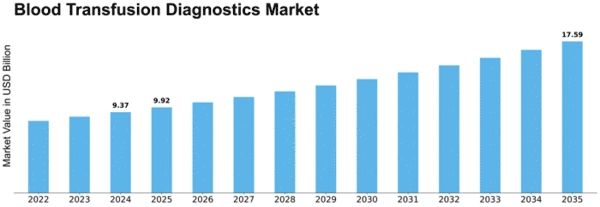

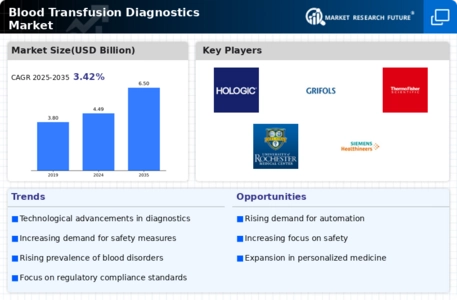
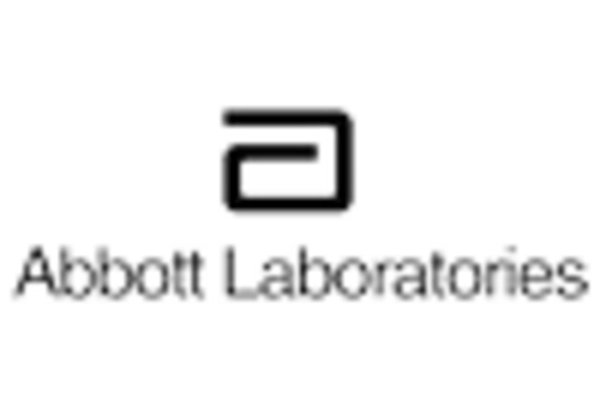
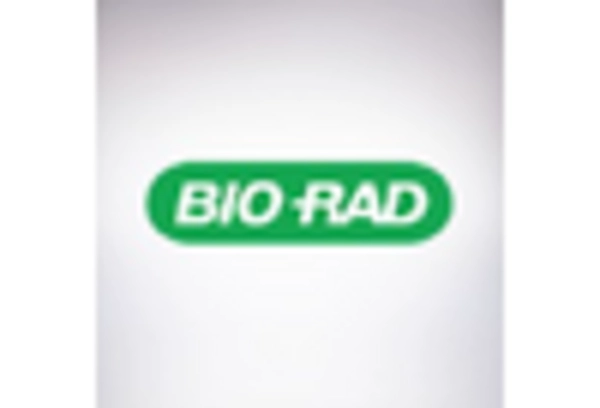
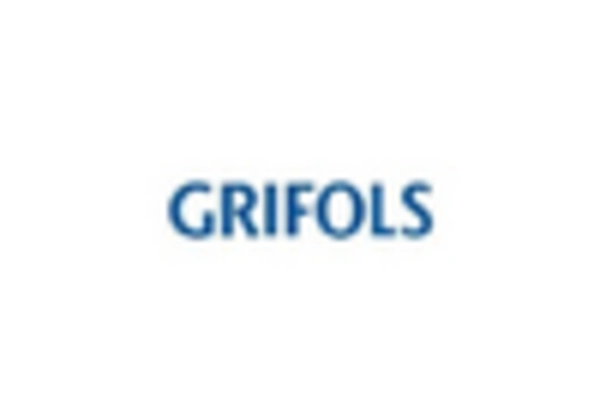
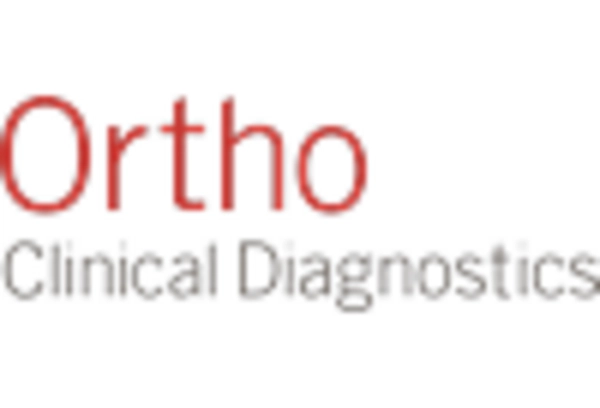
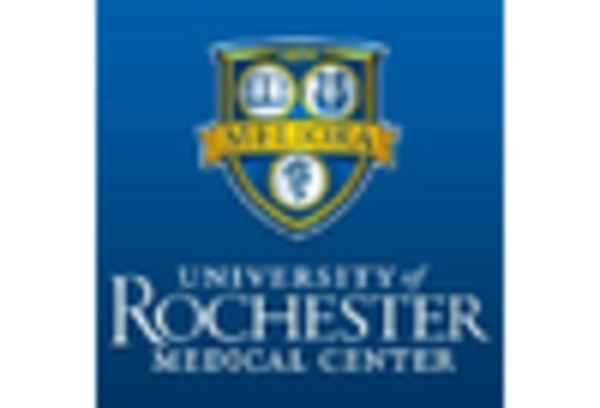
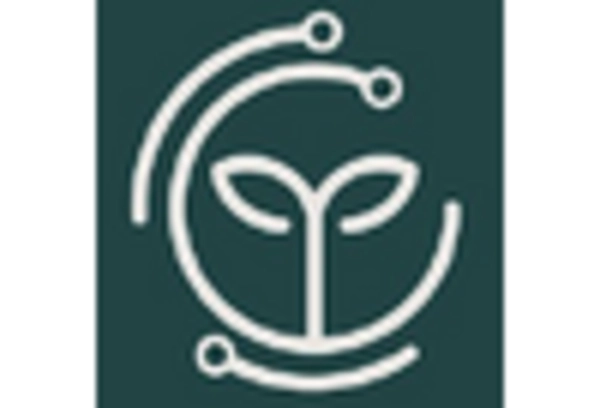









Leave a Comment